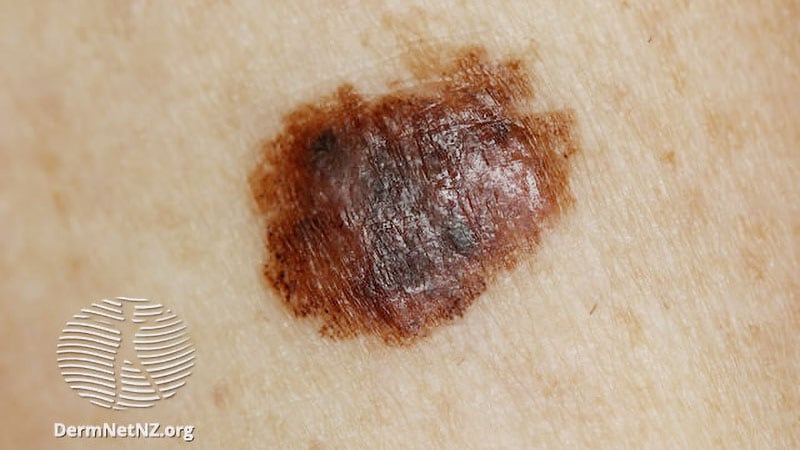Increased Use of Immunohistochemistry in Medicare Patients with Melanoma Diagnoses Raises Concerns about Appropriate Utilization
Core Concepts
The use of immunohistochemistry (IHC) claims associated with Medicare melanoma diagnoses has increased significantly from 11% in 2000 to 51% in 2017, with substantial geographic variation in practice patterns, suggesting the need for research to optimize IHC use in melanoma diagnosis.
Abstract
This article presents the findings of a retrospective analysis of Medicare data that examined the trends in immunohistochemistry (IHC) claims associated with melanoma diagnoses between 2000 and 2017. The key highlights are:
The proportion of melanoma cases with accompanying IHC claims grew from 11% in 2000 to 51% in 2017.
IHC utilization was less common with increasing patient age, declining from 44% in patients aged 65-74 years to 18% in patients 85 years and older.
By summary stage at diagnosis, IHC utilization ranged from 29% of in situ cases to 75% of distant cases.
After controlling for year of diagnosis, IHC use was statistically significantly associated with demographic, tumor, and geographic characteristics, except for race and ethnicity.
Across all the years of the study, regional usage ranged from a low of 22% in Detroit to a high of 44% in both Louisiana and San Jose-Monterey, California. In 2017, the range was from 39% of cases in Kentucky and Atlanta to 68% in New Mexico.
The authors conclude that the extensive use of IHC in clinical practice and the notable regional variation suggest uncertainty about its optimal employment, highlighting the need for research to identify where IHC provides the most value and to develop guidelines regarding its appropriate use.
An accompanying editorial emphasizes the importance of ensuring high-quality, value-based healthcare and the growing need for parameters to guide the appropriate use of IHC and other ancillary histopathologic testing in dermatopathology.
Medicare IHC Claims With Melanoma Dxs Increased, Study Finds
Stats
The proportion of melanoma cases with accompanying IHC claims grew from 11% in 2000 to 51% in 2017.
IHC utilization declined from 44% in patients aged 65-74 years to 18% in patients 85 years and older.
IHC utilization ranged from 29% of in situ cases to 75% of distant cases.
Regional IHC usage ranged from a low of 22% in Detroit to a high of 44% in both Louisiana and San Jose-Monterey, California.
In 2017, regional IHC usage ranged from 39% of cases in Kentucky and Atlanta to 68% in New Mexico.
Quotes
"Given the extensive use of IHC in clinical practice, studies examining the resulting outcomes of IHC on different domains, such as symptom burden, quality of life, and mortality, are crucial."
"The notable regional variation in IHC utilization suggests uncertainty about its optimal employment in clinical practice, and these findings highlight the need for research to identify where IHC provides the most value and to develop guidelines regarding the appropriate use of IHC."
Key Insights Distilled From
by John Jesitus at www.medscape.com 04-05-2024
https://www.medscape.com/s/viewarticle/use-immunohistochemistry-diagnosing-melanoma-medicare-2024a10006hb
Deeper Inquiries
How might the increased use of IHC impact the overdiagnosis of melanoma, and what further research is needed to understand this potential relationship?
The increased use of IHC in melanoma diagnosis could potentially impact the overdiagnosis of the disease by providing additional data that may lead to more accurate and reliable assessments. However, there is a concern that false-positive results from IHC could contribute to melanoma overdiagnosis. Further research is needed to understand the extent to which IHC influences the overdiagnosis of melanoma. Studies should focus on determining whether IHC helps in avoiding the diagnosis of melanoma in borderline cases where support from IHC is lacking, or if it leads to unnecessary diagnoses that may not have clinical significance.
What are the potential barriers or challenges in developing guidelines for the appropriate use of IHC in melanoma diagnosis, and how can these be addressed?
One of the potential barriers in developing guidelines for the appropriate use of IHC in melanoma diagnosis is the lack of consensus on when IHC testing should be employed. The subjective nature of histologic diagnosis in melanoma adds complexity to determining the optimal use of IHC. To address these challenges, collaborative efforts involving dermatopathologists, pathologists, and other relevant stakeholders should be undertaken to establish evidence-based guidelines for the use of IHC in melanoma diagnosis. Additionally, research studies focusing on the outcomes of IHC on different domains such as symptom burden, quality of life, and mortality are crucial in informing the development of guidelines.
What other diagnostic tools or techniques, beyond IHC, could be explored to improve the accuracy and reliability of melanoma assessments while also considering the societal burden of healthcare costs?
In addition to IHC, other diagnostic tools and techniques that could be explored to enhance the accuracy and reliability of melanoma assessments include molecular testing, gene expression profiling, and advanced imaging modalities such as dermoscopy and reflectance confocal microscopy. These tools can provide valuable information for precise diagnosis and prognostication of melanoma. To address the societal burden of healthcare costs, cost-effectiveness analyses should be conducted to evaluate the utility of these diagnostic modalities in improving patient outcomes while optimizing resource utilization. Collaborative research efforts involving multidisciplinary teams can help identify the most cost-effective and clinically beneficial diagnostic approaches for melanoma assessment.
0
